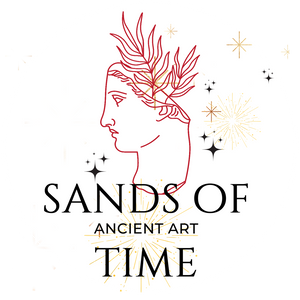注册即可享受 10% 折扣
EA2506a
可取货, 通常在 2 小时内就绪
1002 Wisconsin Ave NW
Front store
Washington DC 20007
美国
+12023420518
The Tyt-knot, also known as the girdle of Isis, has been described as "an open loop of material from whose bound lower end hangs a long sash flanked by two folded loops". Its name may derive from Egyptian tayt, meaning "shroud" or "curtain". Even in written sources, the meaning and symbolism of this object seem to be similar to those of the ankh, and the sign is often translated as "life" or "welfare."
Knots were widely used as amulets because the Egyptians believed they bound and released magic. By the New Kingdom, the symbol was clearly associated with Isis, perhaps due to its frequent association with the djed pillar. The two symbols were therefore used to allude to Osiris and Isis and to the binary nature of life itself. The association of the sign with Isis leads to it being given the names, "the knot of Isis" (as it resembles the knot which secures the garments of the gods in many representations), "the girdle of Isis" and "the blood of Isis."
Because of the latter name, "blood of Isis," the sign was often used as a funerary amulet made of a red semi-precious stone such as carnelian, red glass, or red jasper, such as this example. The Book of the Dead, spell 156, states, "The blood of Isis, the spells of Isis, the magical words of Isis shall keep this great (or shining) one strong, and shall protect him from whosoever would harm him do to him such things as the abominateth."
The Book of the Dead also specifies that the symbol be made of blood-red stone, and placed at the deceased's neck.
Medium: Red Jasper, 18K gold
Dimensions: Height: 3/4 inch (1.9 cm). Strung as a pendant on a modern 18" adjustable chain of 18K yellow gold.
Condition: The amulet is intact and in excellent condition overall. A lovely example.
Provenance: Private collection of Marcel Gibrat, NYC. 1950s-70s, then private NJ collection.
Marcel Gibrat was a restorer for the Metropolitan Museum of Art in Manhattan from the 1960s to the 1990s and later owned a Madison Ave Restoration Studio & Art Gallery one block from the Guggenheim Museum. Marcel was the only restorer employed by the Met without a PhD. He began purchasing antiquities in the early to mid-1960s, and many of the pieces in this collection were purchased at that time. He collected, restored, bought and sold high quality items for three decades, before his death in 1993.
Sands of Time提供终生无条件的真实性和出处保证。您从我们这里购买的每件物品都附有一份真实性证书,注明文化、出处和年代。
此外,我们会进行尽职调查,以确保据我们所知,该物品不是从发掘地、建筑纪念碑、公共机构或私人财产中非法获得的。只要有可能,我们就会参考现有的收藏或出版物。只要有可能,我们就会参考现有的收藏或出版物。
我们周二至周五通过 FedEx 发货,如果您的订单在下午 2 点之前收到,通常当天发货。在美国大陆,包装、运输和保险都是免费的。根据尺寸和目的地,交货时间为 1 至 5 个工作日。
对于海外发货,我们收取小额固定费用,包括包装、准备所有海关文件、保险和承运人费用,符合所有美国和国际海关要求。海外发货使用 USPS 优先邮件或 FedEx 发送,但如果您有运输偏好,请联系我们。国际客户负责所有关税和税款。










